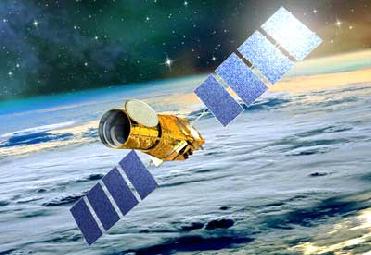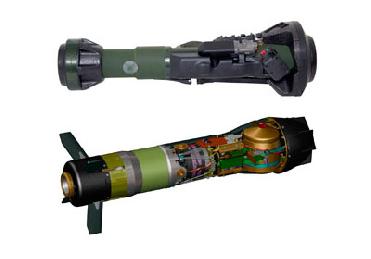
The CoRoT space telescope. Photo CNES
LONDON (PTI): An international team, including scientists from the Oxford University, has discovered seven diverse new planets, from "shrunken-Saturns" to "bloated hot Jupiters", as well as a rare brown dwarf with 60 times the mass of Jupiter.
The CoRoT (Convection, Rotation and Transits) space telescope is operated by the French space agency CNES.
It discovers planets outside our solar system � exoplanets - when they "transit", that is, pass in front of their stars.
Once CoRoT detects a transit, additional observations are made from the ground, using a number of telescopes all over the world.
Although astronomers cannot see the planets directly, they use the space- and ground-based data to measure the sizes, masses, and orbits of these new planets precisely.
This is why, among all known exoplanets, those with transits yield the most complete information about planet formation and evolution.
"Each of these planets is interesting in its own right, but what is really fascinating is how diverse they are", said co-investigator Dr Suzanne Aigrain from Oxford University's Department of Physics.
"Planets are intrinsically complex objects, and we have much to learn about them yet," researcher at the Laboratoire d'Astrophysique de Marseille (LAM) and head of the CoRoT exoplanet program Magali Deleuil said
"Every discovery of an extrasolar planetary system is a new piece in the puzzle of how these systems do form and evolve. The more systems we uncover, the better we can hope to understand the processes at play," Deleuil said.
CoRoT-8b is the smallest in this discovered batch. At about 70 per cent of the size and mass of Saturn, CoRoT-8b is moderately small among the previously known transiting exoplanets. Its internal structure should be similar to that of ice giants, like Uranus and Neptune, in the Solar System.
It is the smallest planet discovered by the CoRoT team so far after CoRoT-7b, the first transiting Super-Earth.
CoRoT-10b is the eccentric giant. The orbit of CoRoT-10b is so elongated that the planet passes both very close to and very far away from its star. The amount of radiation it receives from the star varies tenfold in intensity, and scientists estimate that its surface temperature may increase from 250 to 600 degree Celsius, all in the space of 13 Earth-days (the length of the year on CoRoT-10b).
CoRoT-11b is the planet whose star does the twist. CoRoT-11, the host star of CoRoT-11b, rotates around its axis in 40 hours. For comparison, the Sun�s rotation period is 26 days. It is particularly difficult to confirm planets around rapidly rotating stars, so this detection is a significant achievement for the CoRoT team.
CoRoT-12b, 13b and 14b, a trio of giants, orbit close to their host star but have very different properties.
Although CoRoT-13b is smaller than Jupiter, it is twice as dense. This suggests the presence of a massive rocky core inside the planet.
With a radius 50 per cent large than that of Jupiter (or 16 times larger than of Earth), CoRoT-12b belongs to the family of "bloated hot Jupiters", whose anomalously large sizes are due to the intense stellar radiation they receive.
On the other hand, CoRoT-14b, which is even closer to its parent star, has a size similar to that of Jupiter. It is also massive, 7.5 times the mass of Jupiter, which may explain why it is less puffed up.
Such very massive and very hot planets are rare, CoRoT-14b is only the second one discovered so far.
CoRoT-15b: the brown dwarf: CoRoT-15b mass is about 60 times that of Jupiter. This makes it incredibly dense, about 40 times more so than Jupiter. For that reason, it is classified as a brown dwarf, intermediate in nature between planets and stars.
Brown dwarfs are much rarer than planets, which makes this discovery all the more exciting.
 Previous Article
Previous Article Next Article
Next Article













The Indian Air Force, in its flight trials evaluation report submitted before the Defence Ministry l..
view articleAn insight into the Medium Multi-Role Combat Aircraft competition...
view articleSky enthusiasts can now spot the International Space Station (ISS) commanded by Indian-American astr..
view article